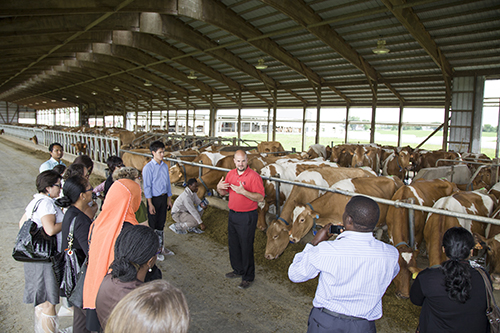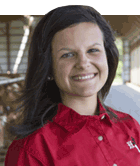
Communicating with influential consumers is among the many responsibilities of agriculturists. It is better for producers and those from the industry to be sharing the good work that is done everyday to feed our country, as opposed to those who just don't understand what it means to be a farmer and to care for your land, livestock and the consumers you are feeding. The U.S. Farmers and Ranchers Alliance (USFRA), together with communication strategy and research consultants Maslansky Luntz + Partners, share their findings on how we can better define our messages and the language we use when educating impressionable consumers.
In past research, USFRA has found that our old standby messages of how producers are "feeding the growing world's population" don't mean as much to consumers as we would hope. What they really want to know is how producers go about feeding the world and how it will affect their health. To find the best way to reach out to consumers, new research was conducted in September 2012. About 30 opinion leaders in urban areas like Chicago, Ill., Los Angeles, Calif., Boston, Mass., and Alexandria, Va., were part of a focus group and had in-depth discussions about key messages. What was found could change the influence agriculturists have on today's consumers.
The main concern was long-term health. Consumers are skeptical about all things they deem potentially unnatural, like antibiotics and hormones. This skepticism has resulted in distrust, as 49 percent said conventional agriculture is on the wrong track. USFRA has also found that we can no longer communicate the same way using token messages. In order to be relevant, producers must focus on continual improvement. Instead of defending what we are doing today, we should be sharing the promise of tomorrow.
In sharing that promise, there are certain messages that are of major concern. Consumers crave transparency. They want information about where their food comes from. Additionally, they want to know that products like antibiotics and pesticides are being used judiciously. USFRA shared that "using less" and "more precisely using" these products resonated with consumers. As all of us in dairy circles already know, all dairy products are antibiotic-free, since every load of milk is tested.
Specific language and messaging is key when addressing certain topics with consumers. When the conversation is focused on sustainability, USFRA recommends producers share stories on recycling, reusing resources and minimizing waste. Although these topics seem like common sense to us, the unaware consumer is assured by these simple everyday practices. As for animal care, most people just want to know that animals are not being abused and those who act wrongly are reprimanded. In sharing these stories, the basics can bring comfort to consumers.
Engaging in conversation, honestly addressing their questions, sharing what it means to grow their food and showing good intentions could change the opinion of an influential consumer. To become part of the dialogue, visit www.fooddialogues.com. Awareness begins with you.

The author is the 25th Hoard's Dairyman editorial intern. She will be a senior at California Polytechnic State University in San Luis Obispo. At Cal Poly, Taylor is majoring in dairy science with an agricultural communications minor. Pires grew up on a 500-cow dairy in Merced County, Calif.











